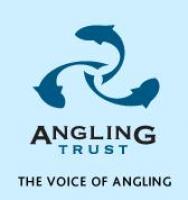
The Angling Trust is highlighting two reports from Europe that show that numbers of cormorants across Europe are their highest for 150 years. The studies further strengthen the case for action to be taken to protect fish stocks in the UK from unsustainable predation by cormorants.
The first report was commissioned by the European Parliament’s Fisheries Committee from Professor Ian Cowx of Hull University’s acclaimed Fisheries Institute and the other is the European Commission’s clarification on derogation under the Birds Directive which provides important information to support any moves by the UK Government to open up the current inadequate licensing system for controlling cormorant numbers.
A review of the licensing of fish eating birds has been carried out over the past two years following pressure from the Angling Trust for the Environment Minister to act to protect fish stocks.
One of the aims of Professor Cowx’s report was to recommend a management strategy to reduce the damage caused by cormorants to fisheries and aquaculture.
Key findings:
- Cormorant numbers across Europe are now at their highest for at least 150 years, in excess of 500,000 birds
- There has been an upsurge of cormorants in inland waters in Europe since the late 1980s
- Cormorants are causing direct damage to fisheries and indirect damage to ecosystem dynamics including forestry, water quality and biodiversity
- Countries need a structured management plan including lethal control
- A large scale management plan on Lake Huron in North America worked: cormorant populations in North America were reduced by 160,000 birds, nests in the Lake Huron area were reduced from a peak of 5,500 nests to 500. This resulted in a rapid recovery of fish stocks
- Each Member State should organise their response to cormorants drawing on lessons from the US Fish & Wildlife Service.
The second report provides the European Commission’s clarification on derogations allowed under the Birds Directive. The report can be downloaded from our website HERE (5.8Mb file).
Key Points:
- Allowed to protect fauna & flora and to prevent serious damage to crops, livestock, forests, fisheries and water
- Annual report by Member States to EC required
- Have to show “no other satisfactory solution” to lethal control
- Denmark & France have National Management Schemes
- Derogations to protect eels from predation in eel management plans is acceptable
- Derogations to protect marble trout, grayling and salmon are acceptable where their conservation status is at risk
- Measures should be aimed not at maintaining specific population levels of cormorants but to provide necessary protection for fish and fisheries.
Chief executive of the Angling Trust Mark Lloyd said:
“These two reports are highly significant as they clarify beyond argument that the EU Birds Directive is no barrier to allowing member states to take the necessary action, including shooting, to protect fisheries from unsustainable predation by cormorants whose numbers have exploded in recent decades. Without healthy fish populations in our rivers, streams and lakes many other types of wildlife will suffer, and we will lose the huge benefits of angling to the economy and society. Cormorant numbers are doing untold damage to our fish and fishing, which is why the Angling Trust has persuaded the government to review the current and wholly inadequate system of licensing controls on their numbers and the damage they do. We urge the Minister to act as soon as possible now that the review has concluded.”









